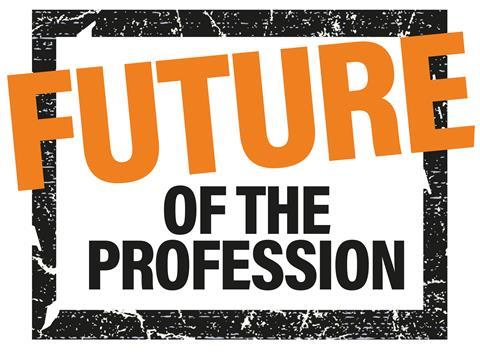Architects must stop fighting yesterday’s battles around professional status and focus on the thought and creativity that they bring, writes Satish Jassal

Like most architects I know, I find that running a small business, winning work and delivering for our clients is more than a full time job. Finding time to do everything is a constant challenge.
Recently I undertook an experiment to see if I could save time and money by employing AI to share the burden. I experimented by inputting the following:
/Imagine: a house designed by Satish Jassal Architects in a tight urban site in London.
Two minutes later, four images appeared, none of which looked like a house my practice would design. I tried again, this time with:
/Imagine a house designed by Mies van der Rohe in a tight urban site in London.
In 30 seconds, four images of sleek, glass-encased courtyard houses in the style of Mies van der Rohe materialise. However, upon closer inspection, their fakeness is evident.
Two realisations dawned on me:
1. My online presence could be better, and I should improve my website’s search engine optimisation.
2. AI has killed the image of architecture.
The ability of AI to generate high-quality architectural renderings in seconds, sometimes surpassing human designs in slickness and visual impact, signals a need for the value proposition of architecture to evolve.
The architectural image, often computer-generated, has become the primary determinant in competitions, planning permissions, and quality assessments. This often reduces intricate and creative design solutions to a single render, catering to an image-driven culture, where key judgements are based on selling one image, rather than analysing the real value of the design approach.
So, what is the way forward? Perhaps it is time to move away from selling architecture based on a single image, especially when the renders often do not align with the final design intent. It may be time to return to a representation of a more meaningful architecture, driven by process and underpinned by an understanding of the brief, site, and impact on people and the environment.

There are a multitude of ways to represent the process and the impact of the design solution. Data is increasingly becoming an important way to inform and measure the impact of the buildings we create, including daylighting, overheating, biodiversity and carbon calculations.
More importantly, architects should market themselves based on the true value that they add, rather than reducing their worth to a single image of what architecture can be. Architects’ worth should not be gauged by an illustration, but by the multifaceted service that they provide, such as reducing risk, adding significant social and monetary value, and creating wonderful buildings and places. This is done through a rigorous process of design, listening, and redesign over time, something that cannot be replicated in seconds.
Architects can unlock the social, environmental, and economic potential of the sites they work on. Often, they see, understand, and conceive in ways others simply cannot.
Our value often lies in the way we collaborate with clients, project managers, planners, and even quantity surveyors, to name a few. Architects do not create in a vacuum; they do it with others.
Architects have the ability to communicate complex ideas simply, create sustainable spaces, and transform lives. Given the right access to projects, architects can ensure buildings are safe for all, delightful to inhabit and profitable on even the most challenging sites.
Once architects start demonstrating their true value, their stock increases. They should not diminish their value by portraying themselves in one way only.
The next generation of architects is advocating for a more inclusive approach to architecture, focusing less on the image of the profession and more on architects’ ability to deliver transformative change. Meanwhile, the previous generation seems to be still holding onto the idea that architects themselves can be made great again - an outdated vision of the profession that fails to meet today’s challenges.
Architects do not have to be geniuses to demonstrate their value, but they should demonstrate their value clearly and uniquely
AI will inevitably force architects to demonstrate their value in other ways. After all, it is only a matter of time before clients question the need for an architect, when AI can produce the images and create the plans through simple text-based instructions.
A recent RIBA report states that 41% of architects already utilise AI in their work, and it is only a matter of time before non-architects do the same. We must remember that AI, while efficient, lacks genuine imagination and is currently merely replicating.
It is, however, a tool that architects must embrace - a utensil that can help architects make informed decisions on sustainable strategies, technical compliance, material selections and budget constraints to transform their workflow. AI may eventually become part of the team, like the AI computer in Star Trek.
The value proposition that architects can bring will become even more important when it comes to fees. The architect’s value is not in creating the representation of the architecture through a single image but in the creative thought that underpins it.
I recently visited the church of Santa Maria delle Grazie in Milan and learnt that Leonardo did not physically paint the Last Supper himself. He had a team of artists that he conducted to create that masterpiece.
Leonardo was not paid per hour or a percentage of the total cost. He was paid for the creative thought he brought to the commission, and there lay his value. Architects do not have to be geniuses to demonstrate their value, but they should demonstrate their value clearly and uniquely.
We must all remember that AI cannot replicate the true creativity and empathy that an architect can bring to the environments we all inhabit. AI must be guided by a human. That is, until AI starts contemplating its own being…
>> Also read: ‘No turning back’ says Oki as RIBA report shows 41% of UK architects now using AI
Postscript
Satish Jassal is director of Satish Jassal Architects. He is a design expert associate for the Design Council, sits on the Harrow design review panel, is a Fluid diversity mentor and a trustee of CDS Cooperatives housing association
















6 Readers' comments